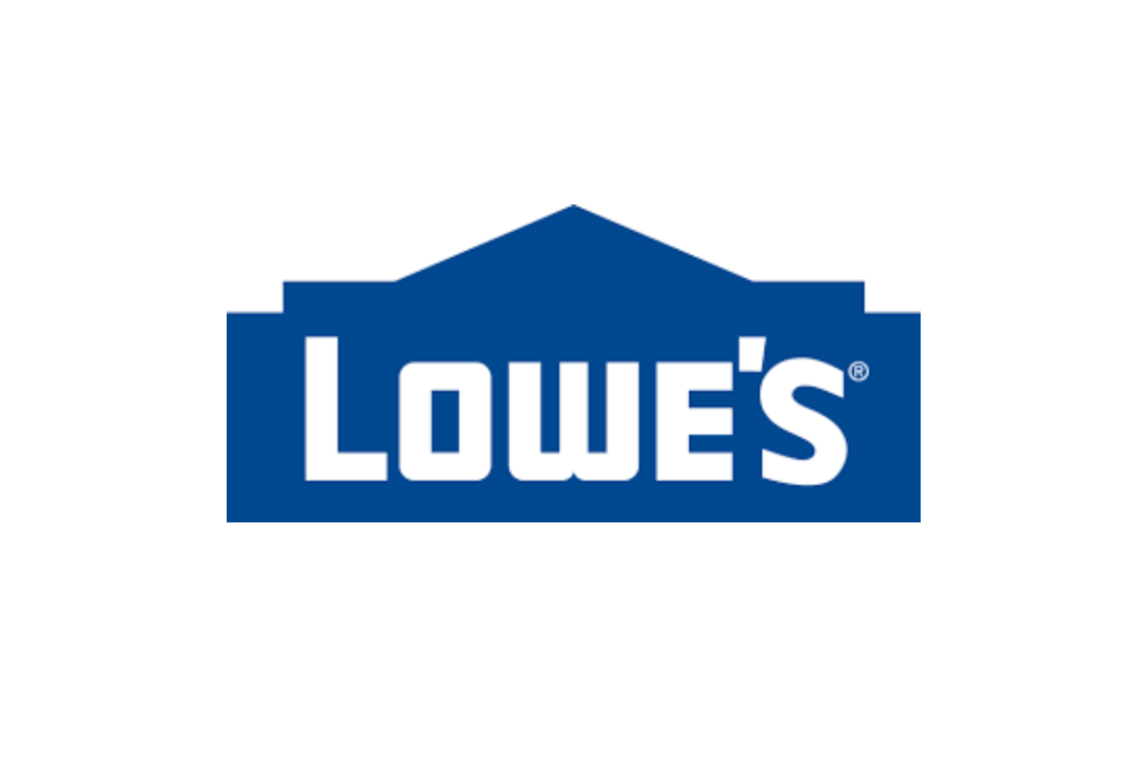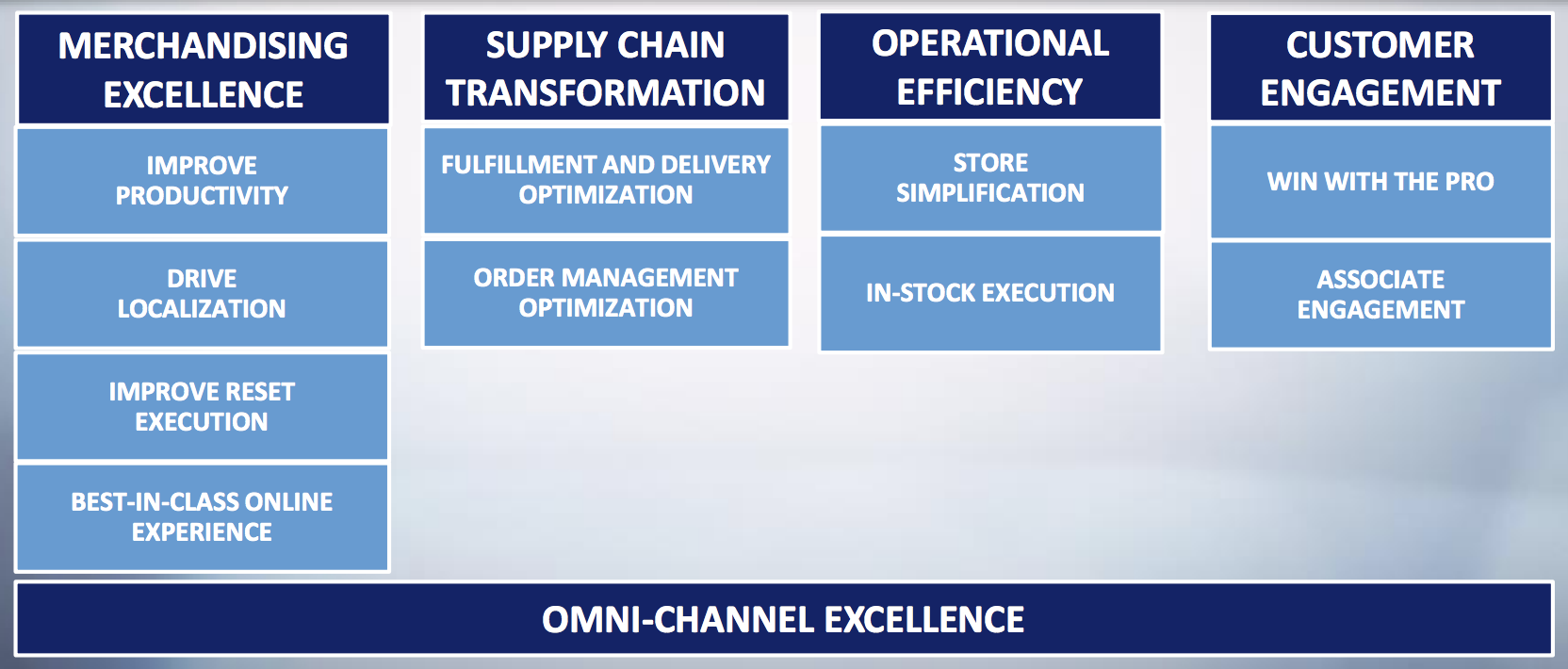
Lowe's: A Quality Dividend King With Enduring Advantages
Lowe's (LOW) was founded in 1946 and is the world’s second largest home improvement retailer. The company operates over 2,100 home improvement and hardware stores (almost all in the U.S.) and helps homeowners, renters, and other customers complete a wide array of projects.
The company’s stores are famous for being a one-stop shop for both do-it-yourself (DIY) customers (75-80% of revenue) and professional contractors (20-25% of revenue). A typical Lowe's store stocks more than 34,000 products across virtually every home improvement product category (lumber, paint, appliances, flooring, tools, cabinets, etc.).
Approximately 5% of Lowe’s sales are made online today, but the company’s strategy is focused on omni-channels sales to capitalize more of the e-commerce trend.
Approximately 5% of Lowe’s sales are made online today, but the company’s strategy is focused on omni-channels sales to capitalize more of the e-commerce trend.
Business Analysis
Home Depot (HD) and Lowe's dominate the U.S. home improvement market. Each of these companies benefits from brand recognition, prominent store locations, a comprehensive line of products, economies of scale, massive distribution channels, and a strong focus on customer service.
Home Depot (HD) and Lowe's dominate the U.S. home improvement market. Each of these companies benefits from brand recognition, prominent store locations, a comprehensive line of products, economies of scale, massive distribution channels, and a strong focus on customer service.
Smaller competitors are unable to match the broad assortment of inventory and in-store product presentations that Lowe’s can afford. They also have much less bargaining power with suppliers, making their products less price-competitive. Consumers have few reasons not to head to Lowe’s or Home Depot for their home improvement needs.
Lowe’s has also been improving its competitive positioning by investing more in technology and product presentation. Through the use of technology and helpful in-store displays and service, customers have even fewer reasons to try out competitors’ stores.
Combined with a relatively Amazon-proof niche, Lowe’s has been able to avoid the kind of disruption that many traditional retailers are facing. And thanks to the company’s investments into its online omni-channel sales platform, this will likely continue being the case going forward.
With the U.S. housing market having mostly recovered from its 2008-2009 collapse, management is especially focused on the company's long-term growth plans.
Specifically, despite improving profitability over the years, Lowe’s still has a long way to go before its margins and returns on capital match its industry peers, especially Home Depot (15% operating margin last year versus 9% for Lowe's).
In fact, due to this lingering performance gap, in 2018 the company decided to shake up its management team, naming former Home Depot executive Marvin Ellison as its new CEO. Mr. Ellison and the new leadership team have embarked on a multi-year turnaround plan focused largely on improving the firm's profitability.
Investments exceeding $1 billion will be targeted at revamping the efficiency of Lowe's supply chain and improving its omni-channel operations. Increasing the time associates spend with customers and growing sales from contractors, who are more loyal and make bigger purchases, are key focus areas as well.

Management believes that its efforts will result in significantly improved sales per square foot and much higher operating margins.
Aside from management's efforts to further strengthen the company, it's worth pointing out that the home improvement market is very large (Lowe's estimated the U.S. home improvement market was valued at $690 billion in 2014) and slow-changing. Mature industries dominated by several large players are difficult for new players to crack into, and Lowe's seems likely to continue its dominance for many years to come.
Key Risks
With any brick-and-mortar retailer these days, it’s important to consider the risks posed by lower-cost e-commerce competitors such as Amazon. Both Home Depot's and Lowe's stocks sold off in 2017 on news that Amazon was acquiring Sears’ Kenmore appliance line, for example.
However, in Lowe’s case, the threat from Amazon still seems low because many of its products are for unique home projects. Physically going into the store to review paint colors, cabinets, flooring options, and more is critical to getting the project right. As a result, not many of Lowe's product categories seem vulnerable to online competition.
Lowe's has also noted that approximately 60% of online purchases made by its customers are picked up directly in its stores, further demonstrating the importance of having physical locations in this market. As the company continues investing heavily in its own e-commerce capabilities, Lowe's should continue positioning itself to ward off the threat posed by Amazon.
Perhaps most importantly, Lowe’s is sensitive to the housing market. Falling housing prices, a weak job market, less consumer spending, higher mortgage rates, and lower housing turnover can precipitate less demand for home improvement projects. The housing market has been recovering for a number of years now, but the best time to invest in Lowe’s would have been during the depths of the housing crisis.
Aside from macro factors related to consumer spending and the housing market, Lowe's doesn't seem to face many other major risks. Growth in big box retail locations could become more difficult in an increasingly digital and saturated market, but this threat is unlikely to jeopardize Lowe's plans for the future.
The home improvement retail industry is slow-changing in nature, and Lowe’s benefits from economies of scale, strong brand recognition, quality merchandise selection, and decent store locations. Simply put, it’s hard to imagine the company being disrupted for the foreseeable future.
Closing Thoughts on Lowe's
Lowe’s appears to be a high quality home improvement retailer with numerous enduring competitive advantages. The company is benefiting from a mix of company-specific actions to improve profitability and a healthy housing market.
Lowe’s dividend growth potential is also very attractive given the company’s conservative payout ratio, decent earnings growth potential, and reasonable balance sheet. Lowe's strengths have allowed it to pay a dividend each quarter since going public in 1961, including more than 50 consecutive years of payout increases, and it should have no trouble continuing its impressive streak.

